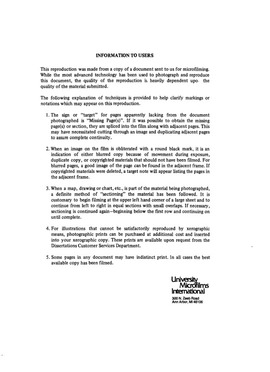| dc.contributor.author | Hrebec, Dennis J., | en_US |
| dc.date.accessioned | 2013-08-16T12:28:59Z | |
| dc.date.available | 2013-08-16T12:28:59Z | |
| dc.date.issued | 1983 | en_US |
| dc.identifier.uri | https://hdl.handle.net/11244/5188 | |
| dc.description.abstract | Urbanized areas of the Southwest were highly variable in terms of population size, population composition, and net migration, and historical circumstances were important in shaping some urban residential patterns. Cross-sectional comparisons indicated that whites versus Blacks were the most segregated group, and whites versus Mexicans were the least segregated group. Temporal comparisons revealed that: (1) white versus Black segregation changed for individual cities, but an overall trend was not discernible, (2) white versus Mexican segregation declined consistently throughout the study area, and (3) Black versus Mexican-American segregation declined on the average, but individual cities were highly variable. | en_US |
| dc.description.abstract | Residential segregation was analyzed for selected urbanized areas of the Southwest for 1960 and 1970. The objectives of the study were: (1) to select the most appropriate segregation index from among three available indexes, (2) to measure the degree of residential segregation between whites and Blacks, whites and Mexican-Americans, and Blacks and Mexican-Americans, (3) to make cross-sectional and temporal comparisons for thirty-four urbanized areas, and (4) to relate the degree of segregation to other socio-economic variables. | en_US |
| dc.description.abstract | Multiple regression analysis produced one multi-variable model that was useful in predicting segregation. Sixty-two percent of the variation in Black versus Mexican-American segregation was accounted for by this model, compared to forty-two percent for white versus Black segregation and twenty-seven percent for Black versus Mexican-American segregation. In the final analysis, residential segregation was best predicted by: income and education variables for whites versus Blacks, cultural variables for whites versus Mexican-Americans, and income and cultural variables for Blacks versus Mexican-Americans. | en_US |
| dc.format.extent | vii, 115 leaves : | en_US |
| dc.subject | Geography. | en_US |
| dc.title | A distance-based analysis of urban segregation in the American Southwest / | en_US |
| dc.type | Thesis | en_US |
| dc.thesis.degree | Ph.D. | en_US |
| dc.thesis.degreeDiscipline | Department of Geography and Environmental Sustainability | en_US |
| dc.note | Source: Dissertation Abstracts International, Volume: 44-11, Section: A, page: 3492. | en_US |
| ou.identifier | (UMI)AAI8404556 | en_US |
| ou.group | College of Atmospheric & Geographic Sciences::Department of Geography and Environmental Sustainability | |
